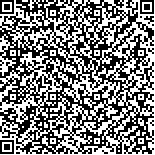阮雯聪,金慧英,杨屏日,等.先天性肌性斜颈严重程度评分表对小儿先天性肌性斜颈诊断及预后的评估价值[J].中华物理医学与康复杂志,2021,43(9):821-825
扫码阅读全文

|
| 先天性肌性斜颈严重程度评分表对小儿先天性肌性斜颈诊断及预后的评估价值 |
|
| |
| DOI:10.3760/cma.j.issn.0254-1424.2021.09.012 |
| 中文关键词: 先天性肌性斜颈 多变量分析 先天性肌性斜颈严重程度评分表 |
| 英文关键词: Congenital muscular torticollis Multivariate analysis Muscular torticollis severity classification |
| 基金项目:中国“十三五”国家重点研发计划(2016YFC1306205);浙江省教育厅一般科研项目(Y201941216);浙江省中医药(中西医结合)重点学科项目(2017-XK-A41);浙江省科技计划项目(2015C33178);浙江省中医药科技计划(2021ZB170) |
|
| 摘要点击次数: 5172 |
| 全文下载次数: 9493 |
| 中文摘要: |
| 目的 研究先天性肌性斜颈严重程度评分表(CMT-SCST)在小儿先天性肌性斜颈(CMT)中的诊断与预后价值。 方法 收集2017年1月至2019年6月我院门诊就诊的0~1岁CMT患儿89例,通过CMT-SCST及彩色多普勒超声等技术手段,对入组的不同CMT分型患儿进行患侧和健侧胸锁乳突肌肿块大小或肌肉条纹回声异常区域范围的测量和综合的头面颈部活动功能评定,然后对确诊的患儿追踪随访其治疗过程,治疗方式主要包括手法按摩(每日1次,每次15 min)和姿势矫正(每日2次,每次5 min),随访至入组3个月和6个月后再次复查超声及CMT-SCST,收集数据并评估CMT-SCST在CMT中的诊断与预后应用价值。 结果 ①治疗次数与CMT-SCST 基线得分负相关(r=-0.4651);②CMT-SCST基线得分在7分以上时在治疗3个月后治疗有效,得分在9分以上时治疗3个月后治疗痊愈(P<0.01);③CMT-SCST基线得分在7分以上时在治疗6个月后治疗有效,得分在9分以上时治疗6个月后治疗痊愈(P<0.01);④性别、开始治疗的年龄、髋关节发育不良征象及共患全面性发育迟缓(GDD)与CMT的严重程度无统计学意义(P>0.05),与疾病6个月疗效评价差异亦无统计学意义(P>0.05);⑤对比2013年美国物理治疗协会儿科学部发布的CMT临床实践指南中的CMT严重程度分类系统(CMT-SCS),CMT-SCST能更敏感地提示疾病的预后。 结论 CMT-SCST可为CMT的定量诊断及量化评定提供理论依据,有利于为临床诊治提供指导。 |
| 英文摘要: |
| Objective To explore the value of congenital muscular torticollis severity classification scores (CMT-SCSTs) in the diagnosis and prognosis of infants′ congenital muscular torticollis (CMT). Methods A total of 89 CMT children were examined using ultrasound to determine the size of the affected side and the contralateral sternocleidomastoid mass or the abnormal area of the muscle fringe echo from the head and neck. They were also rated using CMT-SCST scoring. They were then given 15 minutes of massage once a day and 5 minutes postural correction twice a day for 3 to 6 months. They were reviewed using ultrasound and the CMT-SCST 3 and 6 months later. Results The number of treatments was negatively correlated with the initial CMT-SCST score. For those with a baseline CMT-SCST score ≥7 it was effective after 3 and 6 months. Those with a baseline CMT-SCST score ≥9 were almost cured after 3 and 6 months. Gender, age, signs of hip dysplasia, and comorbid global developmental delay (GDD) were not consistently related to the severity and the outcome of CMT. The CMT-SCST was more sensitive in prognosis than the CMT-SCS published in 2013. Conclusions CMT-SCST scoring provides a theoretical foundation for the diagnosis and treatment and evaluation of infants with CMT. It deserves wider popularity and application in clinical practice. |
|
查看全文
查看/发表评论 下载PDF阅读器 |
| 关闭 |